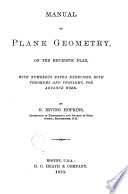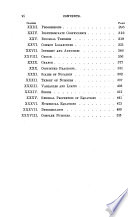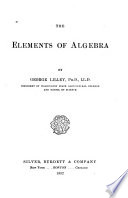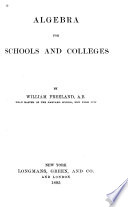 In a series of equal ratios, the sum of the antecedents is to the sum of the consequents as any antecedent is to its consequent. In a series of equal ratios, the sum of the antecedents is to the sum of the consequents as any antecedent is to its consequent.  Solid Geometry - Page 254by John H. Williams, Kenneth P. Williams - 1916 - 162 pagesFull view Solid Geometry - Page 254by John H. Williams, Kenneth P. Williams - 1916 - 162 pagesFull view - About this book
 | George Irving Hopkins - Geometry, Plane - 1891 - 208 pages
...Consult 298, 297, 296, and 299. 303. If any number of magnitudes of the same kind form a proportion, the sum of the antecedents is to the sum of the consequents as any antecedent is to its consequent. Post. Let the quantities a, x, c, n, d, and r form a continued proportion, so that a:x::c:n::d:r. We... | |
 | George Albert Wentworth - Algebra - 1891 - 550 pages
...о с— a V. Alternation ; that is, a will be to с as b is to d. 282. In a Series of Equal Batios, the sum of the antecedents is to the sum of the consequents as any antecedent is to its consequent. For if aff-2, rui, 11 — — — i bdfh r may be put for each of these ratios. Then - = r - = r -... | |
 | Nicholas Murray Butler, Frank Pierrepont Graves, William McAndrew - Education - 1892 - 544 pages
...application of their methods. For instance, under the theory of proportion, it is sometimes stated that : " In a series of equal ratios the sum of the antecedents...consequents as any antecedent is to its consequent." This is a true proposition applied to numbers, but is not true of geometrical magnitudes unless these... | |
 | George W. Lilley - Algebra - 1892 - 420 pages
...163), íSr;-7?H-í»HTherefore, a + c + e + g :l+d+f + h::a:b. Hence, XI. In a continued proportion the sum of the antecedents is to the sum of the consequents as any antecedent is to its consequent. a2 + Ь* а Ъ + b с EXAMPLE 1. .If ~ï~v~î~ = ~j,z 4. г > Prove that о as a mean proportional... | |
 | George Albert Wentworth - Algebra - 1893 - 370 pages
...ос Multiplying by -, — = — -. с ос cd ab or - = -у с d .'. a : с = b : d. 317. In a aeries of equal ratios, the sum of the antecedents is to...consequents as any antecedent is to its consequent. •c, -ta с ea For'lf ¿=5=7=f' r may be put for each of these ratios. Then |=г,.=^=г,j,.r. .-.... | |
 | James Morford Taylor - Algebra - 1893 - 358 pages
...ma : mb = гtc : nd ; (ii.) ma : nb= me: nd. The proof is left as an exercise for the student. 224. In a series of equal ratios, the sum of the antecedents is to the киm of the consequents as any one antecedent is to its consequent. For assume a: b = c: d= e:f= ...,... | |
 | James Morford Taylor - Algebra - 1893 - 362 pages
...mb = nc : nd ; (ii.) ma : nb = me : nd. The proof is left as an exercise for tl1e student. 224. L1 a series of equal ratios, the sum of the antecedents is to the кит of the consequents as any one antecedent is to its consequent. For assume a:b = c: d = e:f=... | |
 | George P. Lilley - Algebra - 1894 - 522 pages
...= d = = д • Therefore, a + c + e + rj : b + d+f+h :: a : b. Hence, XI. In a continued proportion the sum of the antecedents is to the sum of the consequents as any antecedent is to its consequent. a2 + b3 ab + Ь с EXAMPLE 1. .If — r-^_- j- = -rj-x~-j-, prove that b is a mean proportional between... | |
 | George Albert Wentworth, George Anthony Hill - Geometry - 1894 - 150 pages
...conversely, the greater angle is opposite the greater side. 2.- Show that in any continued proportion, the sum of the antecedents is to the sum of the consequents as any antecedent to its corresponding consequent. 3. Prove that, in equal circles, incommensurable angles at the centre... | |
 | William Freeland - Algebra - 1895 - 328 pages
...composition, (л By division, iZ=°ri (2) Dividing (1) by (2), we have, a + b _c + d a — b с — d 292. IX. In a Series of Equal Ratios the sum of the antecedents...consequents as any antecedent is to its consequent. If a:b = c:d = e:f=g:h. To prove (a + b + e + g) : (b + d +f+ K)=a:b. If a:b=c:d = e:f=g:h, н=нALGEBPA.... | |
| |